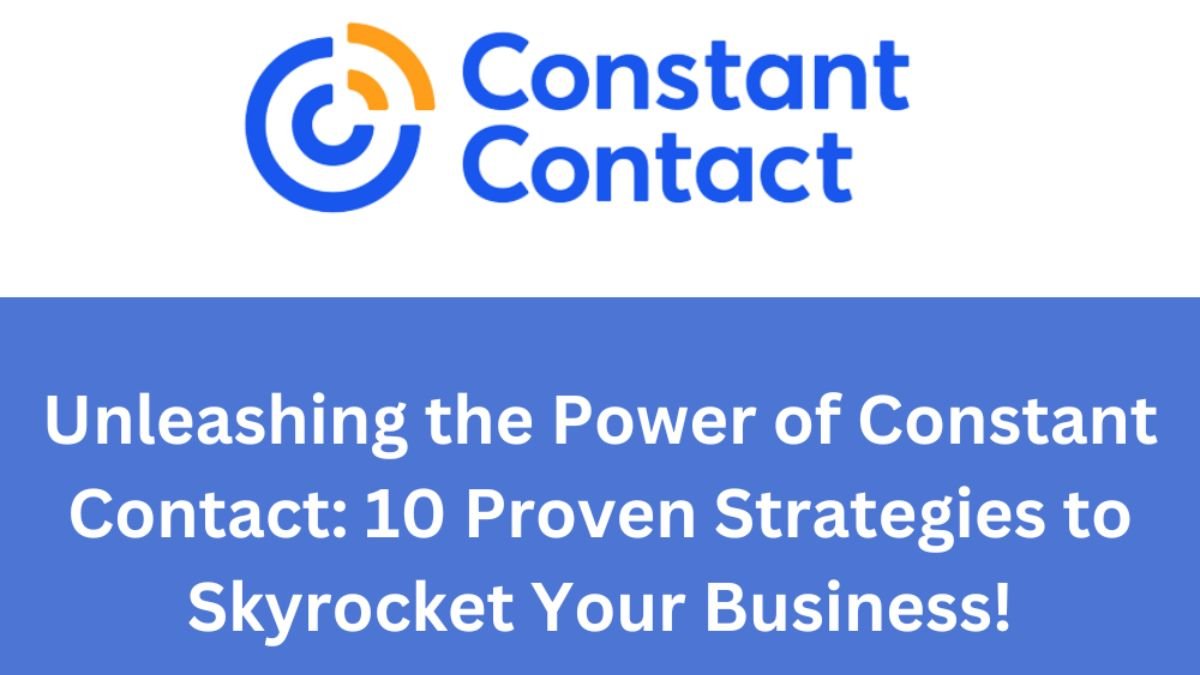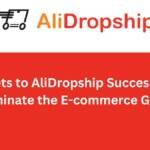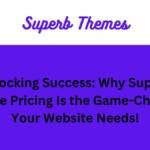In this article, we learn about unleashing the power of constant contact: 10 Proven Strategies to Skyrocket Your Business!
Table of Contents
ToggleIn today’s digital world, speaking to your customers the right way is extremely important if a business wants to do well. Somewhat unexpectedly, one of the cheapest and quickest ways to go to your target audience is through email marketing; there’s Constant Contact.
It’s got several tools and features that might help a business really take the most advantage of sending things. We are going to explore 10 strong strategies you can use with Constant Contact to boost your business. It might be difficult to believe but we can feel better knowing that tools, such as Constant Contact, exist to make our lives easier when it comes to reaching out to people we want to sell to or communicate with.
What is constant contact?
Constant Contact is this marvelous spot on the web where businesses can do several things to speak to people; they help businesses send messages that people actually want, hold online events, create good social media posts, and find out what people think with online surveys; they’re focused on helping businesses get familiar with their customers, keeping them in the loop. And, one, if they so choose, may ponder how contacting your good buddy with things you care about or asking your opinion makes you close with a company.
You understand how people can experiment with creating extremely intelligent and informed email designs, and schedule when they want to send them out with Constant Contact. That’s not the only thing it’s good for. One clearly can envision that you can also keep your contacts in order check how many people actually open and click on links and see how well your marketing material is doing. In addition the platform doesn’t simply stop there. You can organize and market events, handle what you post on social media, and even do online surveys.
Small businesses, charities, and people wanting to be noticed more online and clearly communicate with their audience often go for Constant Contact. It’s because Constant Contact has a very simple layout and many different ways to adjust things, making it really easy to keep in touch with customers and potential clients. One, if they so choose, may ponder how it’s noticeably focused on starting that connection and growing their digital footprint.
1: Build an Engaging Email List
Start by making a very big and detailed email list. You should get better at making your sign-up forms and landing pages if you want to get more people on board. Make sure to give people good data or some great rewards for signing up for your newsletters. In addition there can possibly be happiness in your knowing that when you do these steps right, a large number of people will join your list.
For this section, let us engage in writing content that actually helps people. You must put out things they want or need. Think about creating fun posts that teach them something e-books that explore topics they care about industry reports that share information on trends or any materials that solve common problems from an interesting angle. This way, you’re not simply throwing information at them you’re giving them the good material upfront. It’s a way of saying, I will support you, which makes people more likely to sign up for your newsletters since you’ve already shown them you’re worth listening to.
Get people to sign up by giving them spectacular rewards. You can give out a free e-book, some coupons, or even let them begin to receive special material just for joining your email list. This not only makes signing up seem significantly more worthwhile but also gets them to actually do it. And there can possibly be satisfaction in your feeling that, by offering something nice, you’re making the offer even better.
Optimization of Sign-up Forms: Make sure the forms to sign up are easy for users and help convert visitors into subscribers. They should be short, easy to understand, and grasp attention. You should only ask for things you really need, such as the person’s name and email. Avoid making people fill out a large amount of fields. The ways you use to get people to do something should be attractive, straightforward, and inherently, or in substance, similar to inspiring action.
Set up some special pages where people can join your email list. You need to make these pages really stand out by highlighting why signing up is such a great idea and getting people to actually do it. Do this with catchy titles, convincing writing, and pictures that hold your attention. Unquestionably so – to get more people to sign up, testing different versions might help a lot. One can see the wide reaching results of adjusting little things.
To get more people to sign up, build trust by keeping their data private and being extremely clear about how you use their data. You should tell your future customers that keeping their things private is really important to you; to keep your email list clean and organized and to double-check if people really want to join, consider using double opt-in steps. In our endless pursuit to demystify and simplify, these actions will increase your chances of getting new sign-ups.
To have a really spectacular email list, you must put in work and keep at it. Look at how your list is doing and where you can make it better more. By always sharing great stuff…and making it easy to sign up…the hermetic result of this is you’ll have a very large, and busy, email list that’s extremely valuable for your business.
2: Segment and Personalize Your Campaigns
If you split your email list by characteristics such as who people are, what they enjoy, or what they buy, you can make unique campaigns just for them. When messages really hit the mark for target groups, they catch people’s attention better; this means more people are likely to get involved. At this point, a discerning reader may begin to register that doing it this way really helps things work well.
Demographic Segmentation: When you split your email list into smaller groups, based on characteristics such as where people live, their jobs, how old they are, and whether they’re a male or female, it’s called demographic segmentation; this makes it possible for you to create marketing that really speaks to what different groups need and like. You can send special deals to some ages or have offers just for certain places, or in a very basic person expertise.
First, look at how people use your letters or things or what they buy; this is called behavior-based segmentation. It lets you see what they do, such as what they buy or how active they are; then, you can send messages that really speak to what they like. If someone usually buys certain things, you can show them more items like those. Or if they don’t buy what is in their shopping cart, you can tell them about it again; you might feel happy knowing that this way, you’re giving them a more personal experience, just for them.
Let your subscribers pick what they want, either when they first sign up or through preference centers, with something known as preference-based segmentation. You sort your list by what people enjoy, like their favorite types of products, the data they want to hear about, or even how often they want to get messages from you. Giving them things that match what they enjoy makes them more interested and less likely to press the dislike button. We hope this piece may enlighten on how to get your subscribers more engaged by giving them what they like, the intelligent and informed way.
We hope this piece may enlighten you on how to organize your email list based on where your subscribers are in their journey with your brand. You divide your subscribers into different groups such as beginners, people who are already buying from you, those who haven’t bought in a while, and your top shoppers. By doing this, you can tailor your messages to fit exactly where they are…whether that’s learning about your brand, getting back in touch after some time apart, or showing appreciation to your most loyal customers.
For clients, such as those making a series of choices they get after buying something. If someone hasn’t been active for a while, consider setting up several events to draw them in. And, for new people who just joined your list, beginning with a welcome set of simple messages is a intelligent and informed move. By setting up these automated email systems, you can be sure your subscribers receive messages that are not only delivered right on time but are also extremely relevant to what they’ve been doing with your company. Sometimes, yet rarely so, you can customize these messages to match each person’s unique journey they’re having with your brand.
At its most basic level, essentially, if you really understand who your audience is and share content they’re into, you can make your material more personal for them; this actually helps you connect better, draw more people in, and get more good outcomes.
3: Craft Compelling Email Content
Write brief and clear texts that still get the point across, and note to include some amazing pictures; there is, unsurprisingly, a potential to get more people interested if you experiment with different kinds of information, such as news updates, sales data, guides, or announcements about new items. Always remember, interesting subject lines are extremely important to grasp their attention first!
Make your email text simple and convincing. Discuss how subscribers will benefit in an easy-going way. Make sure the reader is destined to learn that what you’re offering is extremely valuable, by clearly telling them the points. By using words that convince people to do something, like including great actions to follow or time-limited deals, you’ll get them to act.
To really grasp your subscribers’ attention, you should make your content about them. Discuss what they like, what they’ve bought before, and what they’ve been looking at online. Start off by using their names when you say hi. By doing this, it shows that you understand them, and because of that, they’ll be much more interested in what you’re sending; the concrete and clear culmination of this is several subscribers feeling seen and tuning in more to your shows, because they speak directly to them with content they actually care about.
Make sure your emails have CTAs (Calls to Action) that are very clear and powerful. You must place those CTAs so people know exactly what you want them to do, such as buying something, signing up for an event, or getting a download. It’s not hard for one to easily imagine how important it is to use words that make people take action, and note to make those CTAs look very good too.
Keep giving your readers what they expect, and always pack your messages with content they find useful, to make sure they’re always happy to see your messages appear—no matter if you’re sending them out once a week, every two weeks, or every month; to show the details, you need to figure out how often your readers enjoy hearing from you and stick to that schedule.
To really understand your readers to do items, you need to put together some engaging content that they can’t ignore. Start by making attention-grabbing titles, using words that make people want to act, and include some nice pictures that catch their attention; to make sure your posts keep being interesting, try different types of content and make sure they are really what your audience cares about; the final result of this? Your projects are going to shine because you’ve adjusted them just right, changing and improving as you go based on what works. Spend some time and effort on it, and watch how your results end up being extremely effective.
4: Automate Your Email Campaigns
Save a substantial amount of time by using Constant Contact’s gadgets that sort items out for you. Start automated messages to bring back customers who have gone away, help new faces get started, or keep those unsure people interested. What’s wonderful is it does all this without anyone having to do anything. Perhaps of note, these tools make sure the right messages get sent at the right time.
What occurs is: you set up automatic email content that’s noticeably focused on giving people little rewards, new data, or fixes for their common issues, depending on what they do on your website, with your things, or certain items they’re into. We can take as a definite fact that doing this helps build trust and makes it more likely they’ll want to buy from us. It’s a smooth way to push them gently down the sales path without getting in their face.
There’s a thing about automated email campaigns that are noticeably focused on getting those subscribers who haven’t been active or are essentially MIA back into the industry. You set up these triggers when someone hasn’t interacted for a while. Although it may seem strange, sending personalized messages with marvelous deals, time-sensitive offers, or just some first-rate advice can actually make them want to look at your company again. Keeping your email list new and active is extremely important, and that’s where re-engagement strategies come into play.
When it’s your subscribers’ birthdays or holidays, you can send them gifts that are specially made for them. By using automation, you can make these messages truly personal and even include a special discount, deal, unique they won’t get anywhere else; this is a great way to highlight big moments and show your subscribers you actually care about them; there is unsurprisingly a potential to build a stronger connection with your subscribers by celebrating their special days through tailored messages.
After you buy something, companies should send you a note to say thanks, ask how you feel about your order, or give you more help if you need it; these tools can tell you your order’s on its way and even suggest items you might want to buy next, based on what you’ve already bought. When stores keep in touch after you’ve bought something, it essentially makes shopping with them better, and keeps you coming back for more items, or, in a very basic essence, makes you want to buy from them again.
By just getting your system to send out questions for feedback forms or surveys, you can rest because it saves you the extra effort; this intelligent and informed move helps you to uncloak the details about what your customers actually think; then, you can use all that data to enhance your products, services, or even understand your customers better. Automatically getting their opinions makes it extremely easy to figure out how to make things better for them.
5: Conduct A/B Testing
If you want your email campaigns to really succeed, you must experiment with them a lot. Change the subject lines, play with the button that says press here, try out new looks, and change what you’re saying inside. By doing some A/B testing, you can figure out what your crowd likes the most and bump up how many people are actually doing what you want them to. And we may thus possibly come to the conclusion that this is how you get your skills to improve.
Here are some tips on how to use A/B testing to improve your email campaigns: –
To start, you must pick out a certain part of your email blast that you want to look at. Could be anything: from how it looks, who it says it’s from, what the subject says; to what’s inside, including items such as whose email it says it’s sending from, or even the button that asks for action. To understand the details, choose one thing you think might change how well your email works.
When you’re setting up what you think will happen in your experiment, you must be extremely clear about it. Say you’re experimenting with email subject lines to see which ones get more opens. You might guess that the ones with questions are likely to do better than the ones that only say something. A discerning reader may begin to register this as your main point or theory on why things will shake out that way.
You must split everyone up into two different teams: one is called the control group and the other is the test group. What you do is divide your email list. Then, send the email you want to look at to the people in the test group, and the other people, the control group, they stay with the first version. Everything here is inherently, or in substance, similar to dividing your audience into two equal parts.
First, decide what really matters to you to track your versions’ success it could be material showing people’s reactions, such as the number who read their messages or tap on choices, or those who end up buying. Then, to monitor these important signs of performance, use the analytics and reporting tools offered by your email marketing system. By paying close attention to these aspects, it’s inherently, or in subtle ways, similar to gaining a solid understanding of what hits the mark and what misses it.
Look at the scores: With the things you’ve been keeping an eye on, see how the experimental groups did compared to the usual group. Choose the one that did the best and see if the change really matters in a very big way. I think, and you might also think, that if the new way is clearly better, you should surely use it as the standard for that part in the letter you send out later.
6: Integrate Social Media
Integrating social media with Constant Contact can expand your audience and increase engagement. Add social sharing buttons to your emails, invite readers to follow you on social media, and cross-promote your content with Constant Contact’s social media integration.
Using constant contact and social media together: –
Make sure you place social sharing buttons in your project. This lets the box owners put whatever they find straight onto important platforms such as Facebook, Twitter, LinkedIn, or Instagram without worrying. By allowing these thoughtless button presses, one can see without any doubt the reach of your email blasts explodes, attracting new readers from every corner of the internet. It’s an easy way to get more people to see what you’re selling.
It might sound a bit out of the blue but if you have many people following you on social media, it actually does wonders for your brand. By nudging your email subscribers to look at and follow your various social media channels. If you place those social media buttons and crucial links straight onto your site, make a point to encourage—in no uncertain terms—your audience to tap and join you on spaces such as Facebook, Twitter, Instagram, LinkedIn, and so on. Engaging with people across various networks makes your brand significantly more noticeable.
You should really consider putting up links on your social platforms that go straight to your sign-up form or the main page of your project. Why? Because matching up the skills of something such as Constant Contact with the sheer, huge strength of social media shows one thing clearly: spreading the word of your email content on social sites is an intelligent and informed move. By doing this, the circle of people who sees your project grows larger and larger. And a discerning reader, such as yourself, will surely comprehend the value of employing such a strategy to enhance visibility and reach.
Wrapping this up, I really need to highlight how key it is to spread the word about what you’re passionate about. It’s actually a fun plan; imagine taking the things you share in school, and instead of just leaving them there, you post them on social media. We are looking at posting in spots you’re probably already convening at, such as Facebook, Twitter, LinkedIn, or Instagram. But, rather than just relaxing and scrolling, your goal is switched to promoting. The marvelous part is these platforms have tools that help you zero in on people who are most likely to like your content. It’s because these tools help you find people who are sort of into the same items as those who currently enjoy what you do. By doing this, it’s not simply about putting out what you already have laying around; you’re basically showing off your brand, helping new people find out about it. As we close things off, a discerning reader may begin to register that connecting your email tricks with ads on social media can actually enhance your understanding of how well your email campaigns do.
Look at what people are saying about your work on social media often. If someone mentions your content or sends a direct message, make sure you act on it quickly. Say thanks to people when they give input and answer their questions. You must respond when people offer comments. By doing all this, you really make your subscribers feel like they’re part of something. It builds a feeling of belonging for everyone. Sometimes, yet rarely so, you get the chance to really connect with your subscribers through these conversations.
7: Leverage Landing Pages
If you somewhat want more people to jump on board with what you’re discussing, putting together special landing pages for your offers or campaigns is an intelligent and informed move. Dub them up with links in your library; then, by looking at how these pages are doing, you can adjust them to be even better, thanks to the insights from Constant Contact.
Why does this work so well, these landing pages hit your audience with exactly what they need, getting their attention and getting them to follow through. It’s very clear they’re amazing at catching people’s eye and making them act. And perhaps of people, noting how great this method is isn’t shocking—you comprehend how solid this play is.
Before even starting on your landing page, you should be clear about what you’re aiming for. You could be primarily focused on selling a product, finding new people to join, getting people to sign up for an event, or trying to reach another target; the reader is destined to learn that knowing your aim from the beginning simplifies how you build your page and what you plan to communicate. Without a question, having a clear goal makes the whole process smoother right from the start.
You must make sure all the pieces fit together exactly right. When someone looks at your landing page and then sees your email campaign, everything from the logo to the colors and pictures should be the exact same. Why? Because doing this not only strengthens drastically your brand but also gets people to trust you more. The concrete and clear culmination of this is giving people an easy journey to finding and understanding what you’re all about. Keep your logos, colors, fonts, and photos consistent to make that happen.
Make sure your headline is short, sweet, and to the point but also convincing and has everything to do with what you’re discussing in your email. You must grasp your reader’s attention right from the beginning with a headline that demonstrates what’s so great about what you’re offering. It’s like a quick look that makes people want to explore more and really sets up what the rest of the landing page is going to be about. One, if they so choose, may ponder how much of a difference a good title can actually make.
Put in spectacular pictures and videos that actually show what you’re discussing and grasp people’s attention. Make sure these images look good, are on-topic, and actually help explain why your thing is so great. Show people using your product or surprise them with some impressive before-and-after shots to show what your material can do, although it may seem complicated.
One clearly can envision why your landing page really needs a clear Call-to-Action button. You want it to stand out and be easy to click on. This makes it extremely clear for people visiting your site to do items such as Sign Up, Use It Without Paying, or Take It Right Away.
You should try out different items on them: like changing the headlines, swapping pictures, adjusting the CTAs, and modifying the form fields, to really understand what works for your individuals; the best part? By making sure your landing pages are on point and keeping an eye on how well they’re doing, your group emails could perform well and get more victories. In addition there can possibly be gratification in your past knowing that.
8: Monitor and Analyze Metrics
Constant Contact gives you many data and analytics so you can look at how your campaigns are doing. Now, you might think it’s different but keeping track of items, such as how many people open your messages, how many click on links, and how many actually do what you’re hoping they’ll do, or even thinking about it, is key. Use all that data to make intelligent and informed moves and adjust your strategies. By looking at the patterns and getting what your audience likes, you can really improve your approach.
To see if people are actually opening your messages, it’s good to track the open rates of your campaigns. If not many are opening your messages, it’s a sign to change your subject lines, sender names, or even the preview text for better engagement. Getting a significant number of people to open your messages means having really interesting subject lines and sender names. And we may thus possibly conclude, tracking how many people open your email is very important for knowing if you are good at writing emails.
To see if your email content and those action buttons are doing well, keep an eye on how often people are clicking through – that’s your click-through rates (CTRs). It’s not hard for one to imagine, if you got a very high CTR, it means people are really liking your content and are ready to do what you suggest. Now, if your clicks aren’t looking too great, maybe it’s time to enhance, or better, your email messages, make your call to action stand out, or try out some new types of content.
To really understand if people are doing items, such as buying items, joining a class, or downloading files because of your website, you must focus on how well your email campaigns are working. When you want more people to actually react the way you’re hoping, lift the hood to show the details of where your setup might be getting stuck or could use some improvement; that means giving a fresh look to your landing pages, tightening up how you’re asking people to join (your CTAs), and polishing up your words. Doing this shows exactly how and where to adjust things based on the moves people make after looking at your work.
Look at how your divided-up email campaigns did. Look at how many people opened the email, clicked on things, and actually did what you wanted them to do, for different parts of your email list. By thinking carefully about this, you can figure out which parts of your list really pay attention and enjoy what you’re sending them. And we might better understand how to split our list and make our activities more interesting for everyone.
To get the real scoop and understand where you are, you must look at how you compare with others in your field or what you’ve done before. You may be a little unsure that, by seeing where you master and where you could use some work, deciding on goals that you can actually hit, and finding chances to grow, becomes significantly simpler. Digging into comparing your stats with others and looking at past results is key to passing what’s called Comparative Analysis and Benchmarking.
See, if you keep an eye on these signs and study what they’re showing you, you’ll begin to notice some very obvious patterns you need to get better at. Use what you find out to make smarter decisions. Work on making your email marketing approach stronger, and…one can see, unquestionably so…little by little, your efforts will pay off, and your campaigns will get significantly better.
9: Nurture Customer Relationships
After you’ve made a sale, don’t simply stop there. Comfort your customers with follow-up messages that hit the mark, ask them what they think, and include great offers or rewards for those who stick by you. One mustn’t deny that when you forge reliable connections with your buyers, they tend to come back for more and even tell their friends how great you are. Securing strong customer relationships with tools like Constant Contact can really keep the feeling going. In addition knowing you’ve made such positive sensations can feel pretty good.
For this section, let us engage in writing personalized follow-up tasks. It’s extremely important to make them focused on the individual. When a customer buys something or does something you’ve asked, it’s a wonderful idea to say thanks and show you remember them. You should include details about what they bought and also put in some extra facts or expertise they may potentially find interesting. Add their name and specifics about the interaction or buy they made to make it feel really about them.
The upshot of this entire piece is, clearly, that, when you want to know what your customers are feeling towards what you have placed in the area, the move is to actually ask them questions. Display those feedback surveys through an easy platform, could be something such as Constant Contact. You must delve deep into what they believe about the products you sell, the quality of your support team, or essentially anything else about your company. When they change their opinions to match yours, you’ve done really well to enhance whatever you’re offering them or to sort out any potential problems that might be hanging. Keep contacting them for their opinions to continuously polish up your offerings or how you’re backing them up.
Make your best customers feel extremely special by connecting them with spectacular discounts, or possibly even rewards and advancements. By using Constant Contact, you can put together lists of your loyal followers and send them their own special deals or thank-you gifts, because they keep staying with you. Giving out exclusive offers is a nice way to make customers feel valued and might just make them like supporting your business even more. It’s only concerned with setting off on a path to learning, making sure they stick by your side.
To be honest: I consider it extremely important to really understand what your customers are into. You should use all the material they’ve bought before, how they scroll around, or even what they say in surveys to figure out what they’re all about; then you can contact them with wisdom and products that are actually perfect for them. By doing this, you are really showing them that you understand what they need and you are ready to help them find the best items. You have to make your suggestions special for them based on all the information they’ve given you, showing you care about them.
So the big deal is about creating this amazing atmosphere where your customers can relax and get to know each other; think about setting up spectacular events, meetings, or even online spaces with Constant Contact because it’s primarily focused on people convening and sharing their good times. And when people start discussing how great their experiences are, you must have them tell what happened. You could put them on your webpage or send them in letters; the concrete and clear culmination of this? A strong sense of togetherness among your customers. You’re building a place where everyone can join something special.
By connecting with your clients in a real, personal way providing them unique deals, teaching material, and always being there to help there is a profound and deep-seated certainty that they’ll keep coming back for more and tell their friends good things about you. And many things can get a big boost with the help of Constant Contact; their tools and resources make it very simple and quick to keep a strong bond with your clients without missing a beat.
10: Continuously Improve
Always be looking for ways to make your email marketing better, don’t only settle. Keep up with the latest trends and test new things, so you can figure out what’s best for your business. By always checking and upgrading how you use Constant Contact, there is a profound and deep-seated certainty that you’ll be ahead of others in the industry.
To stay ahead of everyone else, always know what’s latest in email marketing, what the top tips are, and the new technology material. Make sure you watch videos, follow industry rules, and join any meetings or events that have to do with what you like; this way, by keeping up-to-date, you’re basically getting a head start, because you’re using fresh strategies that are, inherently or in substance, similar to giving you an edge over others.
To see if your email content is actually working, always look at what the numbers and analysis from Constant Contact are telling you. Spot what’s happening, what keeps happening, and what’s not doing too great; then, take all that data to make your messages better by figuring out who to send them to, what they should say, how they should look, etc. It means a lot when you realize that by making decisions based on this data, your email approach can really improve; there can possibly be gratification in your knowing that tinkering with the data lets you fine-tune everything to work significantly better.
Ask your email subscribers and customers what they think: It’s extremely important to figure out what they like, expect, and how pleased they are with what you’re doing. You must ask them if there’s any way you can do your tasks or agreements better; the reader is destined to learn that using this feedback is really useful for improving things for your customers, and fitting it into your business plans, to keep everyone satisfied.
We hope this piece may enlighten you on how to spice up your email campaigns. The trick is to use A/B testing so you can find out which version your audience likes best. When you’re checking to see what changes make your campaign shine, change just one thing at a time. That way, you can really tell which tweak is making things happen.

























